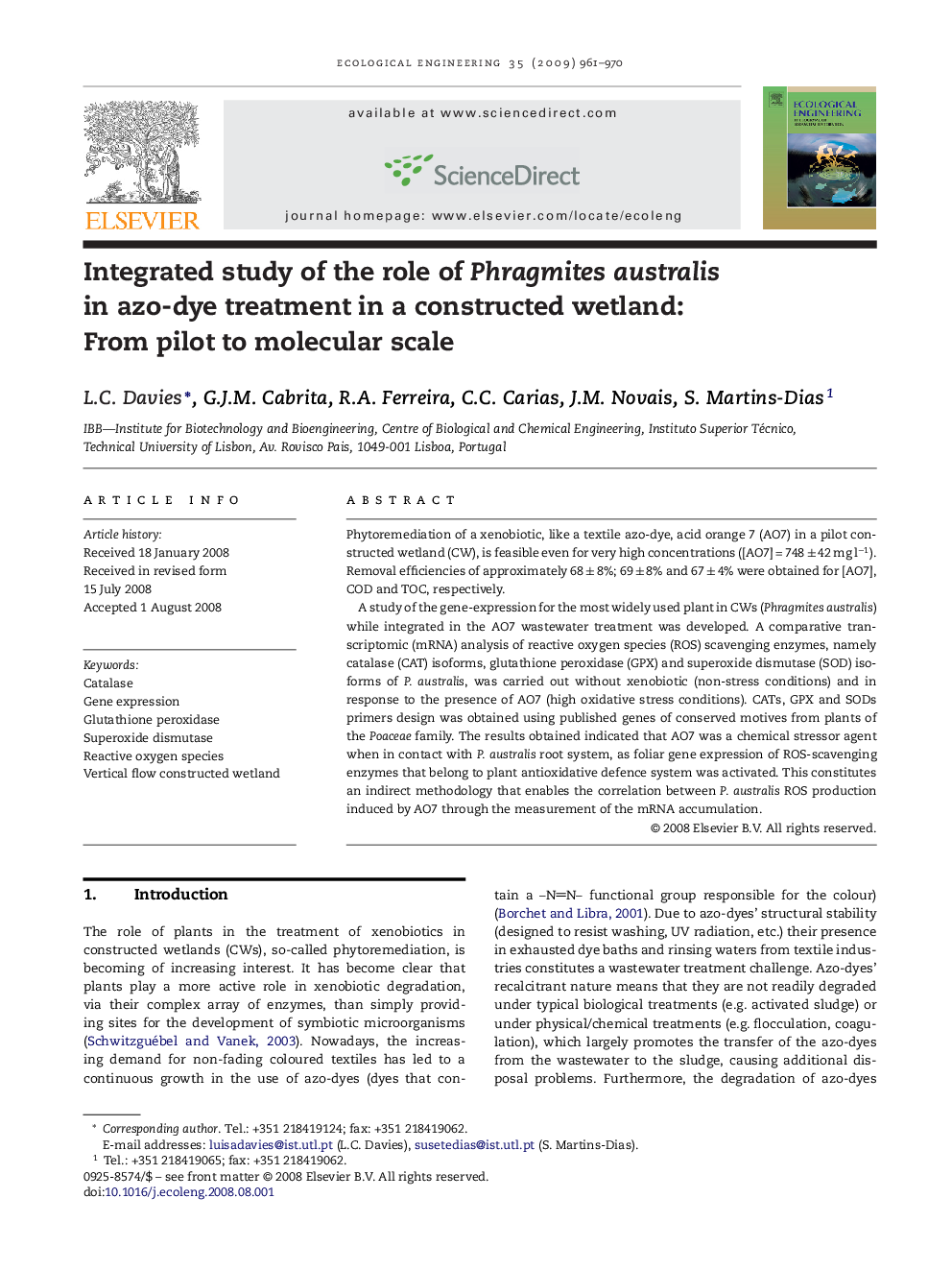| کد مقاله | کد نشریه | سال انتشار | مقاله انگلیسی | نسخه تمام متن |
|---|---|---|---|---|
| 4390895 | 1305200 | 2009 | 10 صفحه PDF | دانلود رایگان |

Phytoremediation of a xenobiotic, like a textile azo-dye, acid orange 7 (AO7) in a pilot constructed wetland (CW), is feasible even for very high concentrations ([AO7] = 748 ± 42 mg l−1). Removal efficiencies of approximately 68 ± 8%; 69 ± 8% and 67 ± 4% were obtained for [AO7], COD and TOC, respectively.A study of the gene-expression for the most widely used plant in CWs (Phragmites australis) while integrated in the AO7 wastewater treatment was developed. A comparative transcriptomic (mRNA) analysis of reactive oxygen species (ROS) scavenging enzymes, namely catalase (CAT) isoforms, glutathione peroxidase (GPX) and superoxide dismutase (SOD) isoforms of P. australis, was carried out without xenobiotic (non-stress conditions) and in response to the presence of AO7 (high oxidative stress conditions). CATs, GPX and SODs primers design was obtained using published genes of conserved motives from plants of the Poaceae family. The results obtained indicated that AO7 was a chemical stressor agent when in contact with P. australis root system, as foliar gene expression of ROS-scavenging enzymes that belong to plant antioxidative defence system was activated. This constitutes an indirect methodology that enables the correlation between P. australis ROS production induced by AO7 through the measurement of the mRNA accumulation.
Journal: Ecological Engineering - Volume 35, Issue 6, June 2009, Pages 961–970